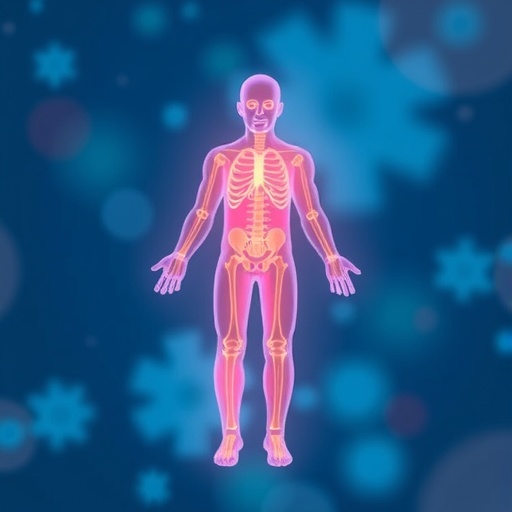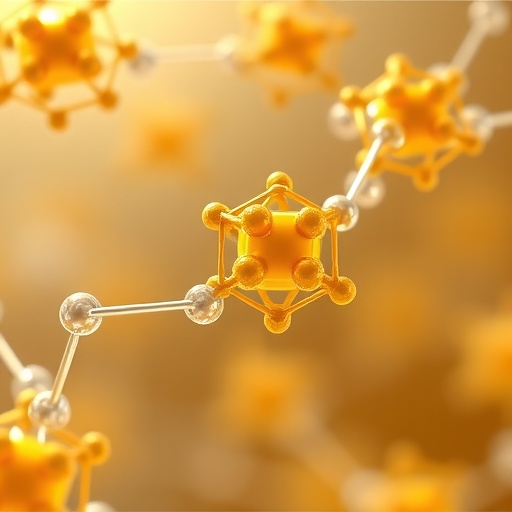In recent years, the specter of antibiotic resistance has emerged as one of the most formidable challenges to modern medicine, not only threatening public health but also reversing decades of progress in the fight against infectious diseases. A stark example of this danger was highlighted by a tragic incident in a Nevada hospital in 2017, where a woman succumbed to multiple organ failure and sepsis due to infection with a superbug resistant to a staggering 26 different antibiotics. This catastrophe underlines the urgent need for innovative solutions to combat these resilient pathogens that are increasingly evading conventional treatments.
As antibiotic-resistant bacteria continue to proliferate globally, researchers are exploring alternative strategies to address this public health crisis. Among the recent advancements in this field is a promising study from Texas A&M University, which suggests that curcumin—an active compound found in turmeric—might play a pivotal role in tackling antibiotic resistance. The discovery details a novel approach involving photodynamic therapy to enhance the effectiveness of existing antibiotics against resistant bacterial strains.
In the laboratory, curcumin was utilized in a method known as photodynamic inactivation. This technique exploits the property of curcumin to act as a photosensitizer, meaning that when exposed to specific wavelengths of light, the compound generates reactive oxygen species (ROS) capable of causing lethal damage to bacterial cells. This approach not only targets the bacteria directly but also disrupts their metabolic processes, leading to cell death, thus rendering previously ineffective antibiotics potent once more.
The research highlights the complexities of bacterial populations. Within a single population of bacteria, heterogeneity manifests in various forms, including differences in cell behaviors that influence their response to antibiotics. Some strains can survive despite antibiotic treatment, leading to their proliferation in the absence of effective competitor strains. The objective of researchers at Texas A&M was to understand and mitigate this variability to enhance treatment outcomes with antibiotics, thereby addressing one of the core problems posed by antibiotic resistance.
Photodynamic inactivation, combined with curcumin, has shown exceptional potential for selectively targeting antibiotic-resistant strains of influential pathogens such as Staphylococcus aureus, which has developed resistance against several common antibiotics. Researchers conducted extensive tests, exposing resistant bacterial strains to cycles of light after feeding them curcumin. The results demonstrated a significant decrease in the minimum inhibitory concentration (MIC) of antibiotics required to eliminate these bacteria, indicating that the combination of photodynamic treatment and antibiotics could dramatically improve treatment efficacy.
One of the crucial benefits of this research is its implication for future therapeutic strategies. The team discovered that reducing bacterial heterogeneity through photodynamic inactivation focused the bacterial population into strains that exhibited more predictable responses to antibiotics. This narrowing of the bacterial distribution simplifies the determination of appropriate antibiotic dosages for effective treatment, which is particularly critical in clinical settings where tailored approaches are necessary.
Implications of this study extend beyond individual patient care, with potential applications that could reshape healthcare practices. The researchers emphasized the cost-effective nature of photodynamic inactivation using curcumin, especially in resource-limited settings where the burden of antibiotic resistance is most felt. By providing an adjunct to standard antibiotic therapy, this method could alleviate some of the immense healthcare costs associated with treating antibiotic-resistant infections.
The versatility of this technique could also find application in military medicine, where injuries and infections sustained in combat environments present unique challenges. The capacity of photodynamic therapy to safely and effectively treat wounds while preventing the onset of antibiotic resistance could be invaluable for soldiers deployed in the field, ensuring both immediate treatment and long-term health outcomes.
Further research may expand the understanding of curcumin’s role against a broader spectrum of pathogens and explore synergistic effects with other antimicrobial agents. This could open avenues for developing advanced treatment regimens that incorporate photodynamic therapy as a standard practice in managing infectious diseases, particularly in the face of rising resistance rates.
Reassuringly, the research was conducted with comprehensive support from various funding bodies, endorsing the importance of these findings both academically and practically. Organizations such as the São Paulo Research Foundation and the National Institutes of Health have recognized the significance of tackling antibiotic resistance, and their backing highlights a collective commitment to finding sustainable solutions for this pervasive issue.
In conclusion, the advancements reported by the Texas A&M research team elucidate a vital pathway towards countering one of the gravest threats to modern healthcare—antibiotic resistance. By repurposing natural compounds like curcumin and employing innovative techniques such as photodynamic therapy, there is renewed hope for effectively managing infections that have long defied treatment. This holds promise not only for medical professionals but also for patients worldwide who may benefit from the revitalized arsenal against resistant pathogens.
Subject of Research: Photodynamic inactivation of antibiotic-resistant bacteria
Article Title: Photodynamic inactivation and its effects on the heterogeneity of bacterial resistance
News Publication Date: 16-Nov-2024
Web References: http://dx.doi.org/10.1038/s41598-024-79743-y
References: Texas A&M University Research Publication
Image Credits: Texas A&M University
Keywords: Antibiotic resistance, photodynamic therapy, curcumin, bacterial heterogeneity, Staphylococcus aureus, superbugs
Tags: antibiotic resistance solutionscombating antibiotic-resistant bacteriacurcumin and superbugscurcumin effectiveness in medicineinnovative treatments for sepsisnatural compounds against superbugsnovel strategies for infectious diseasesphotodynamic therapy for infectionspublic health challenges antibiotic resistancesuperbugs and public healthTexas A&M University researchturmeric as an antibiotic alternative




